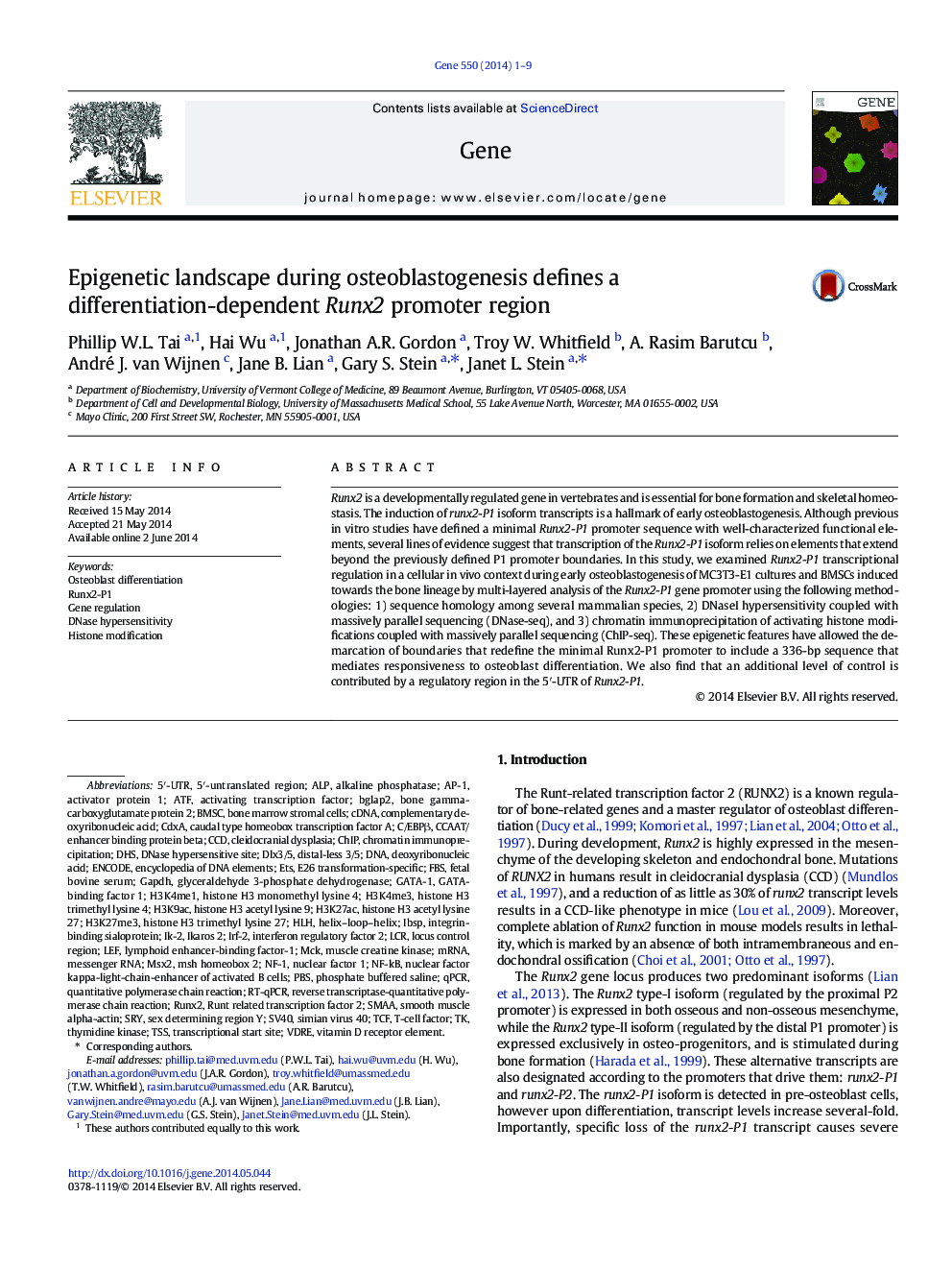| Article ID | Journal | Published Year | Pages | File Type |
|---|---|---|---|---|
| 2816174 | Gene | 2014 | 9 Pages |
•Genome-wide analyses define the epigenetic landscape of the Runx2-P1 promoter.•Activating histone marks demarcate the boundaries of the active Runx2-P1 promoter.•The redefined 0.9-kb promoter responds to differentiation queues.
Runx2 is a developmentally regulated gene in vertebrates and is essential for bone formation and skeletal homeostasis. The induction of runx2-P1 isoform transcripts is a hallmark of early osteoblastogenesis. Although previous in vitro studies have defined a minimal Runx2-P1 promoter sequence with well-characterized functional elements, several lines of evidence suggest that transcription of the Runx2-P1 isoform relies on elements that extend beyond the previously defined P1 promoter boundaries. In this study, we examined Runx2-P1 transcriptional regulation in a cellular in vivo context during early osteoblastogenesis of MC3T3-E1 cultures and BMSCs induced towards the bone lineage by multi-layered analysis of the Runx2-P1 gene promoter using the following methodologies: 1) sequence homology among several mammalian species, 2) DNaseI hypersensitivity coupled with massively parallel sequencing (DNase-seq), and 3) chromatin immunoprecipitation of activating histone modifications coupled with massively parallel sequencing (ChIP-seq). These epigenetic features have allowed the demarcation of boundaries that redefine the minimal Runx2-P1 promoter to include a 336-bp sequence that mediates responsiveness to osteoblast differentiation. We also find that an additional level of control is contributed by a regulatory region in the 5′-UTR of Runx2-P1.
